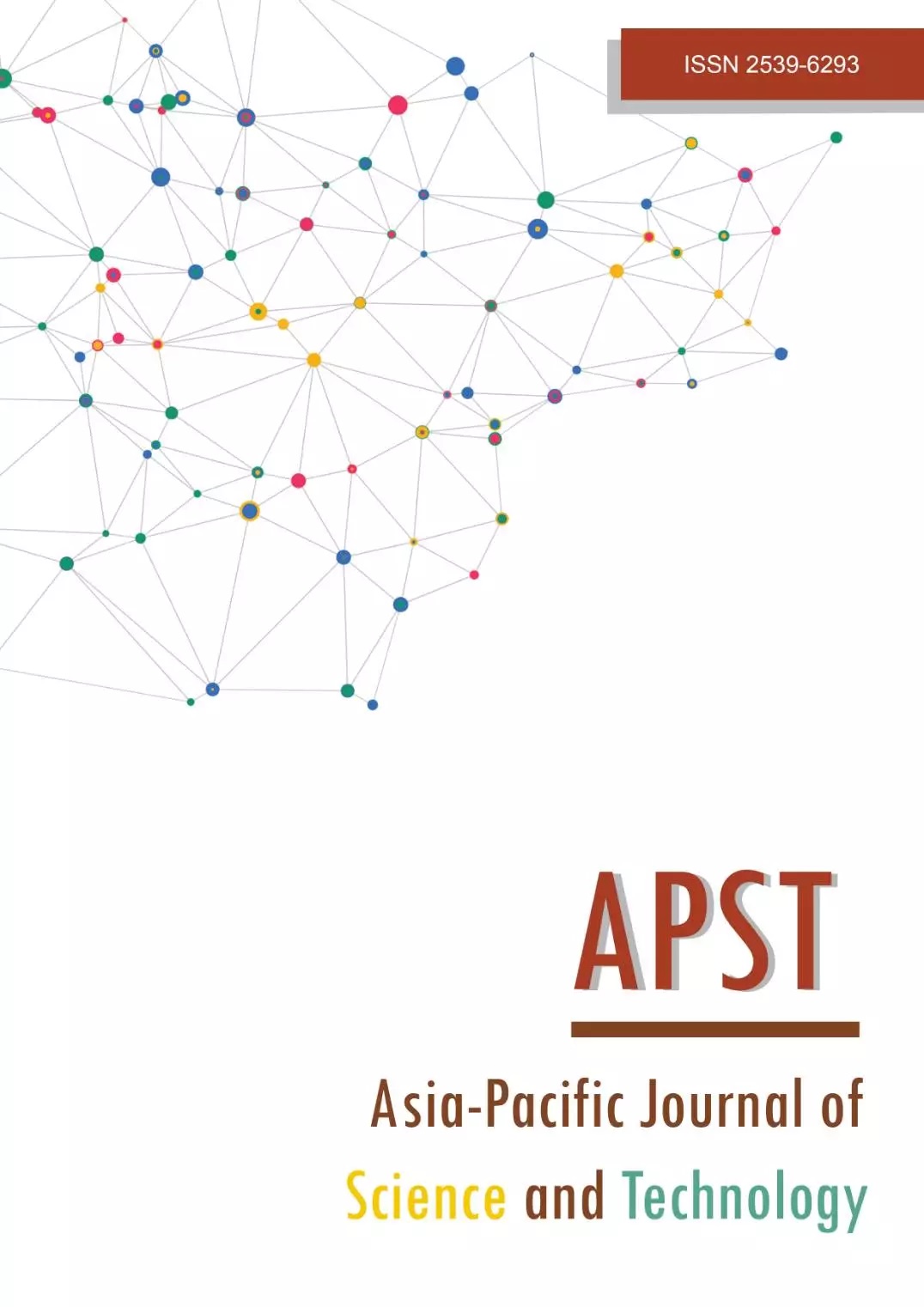Identifying factors that influence customers’ interest in buying refurbished smartphones: An Indonesian context
Main Article Content
Abstract
In this paper, we investigated the factors that influence Indonesian customers in buying a refurbished smartphone. The decision model is constructed using the Analytical Hierarchy Process (AHP). There are four main factors: Price, Performance, Benefit, and Risk, with sub-criteria for each factor. Three smartphone alternatives are determined for comparison: flagship, refurbished, and mid-range smartphones. The model was constructed based on the van Weelden model and by interviewing 13 respondents who had either flagship, refurbished, or mid-range smartphones. The respondents’ age was between 21 and 59 years old. We surveyed 54 respondents, segmented by age, gender, job, knowledge, and experience using a refurbished smartphone. The results show that age and experience using refurbished products are significant factors influencing customers’ decisions to buy refurbished smartphones. Furthermore, younger people consider performance to be the most critical factor influencing their smartphone purchases, while older respondents consider it a benefit. As for performance, both hardware and software are the most critical factors. In all aspects, the flagship smartphone outperforms the refurbished and mid-range smartphones, except in its environmental aspects. In conclusion, only people with concerns for the environment would tend to buy the refurbished smartphones. However, increasing the benefit and hardware performance of refurbished smartphones may drive the younger age groups to switch from buying mid-range to refurbished smartphones, while an increase in risk factors would tend to lower customers’ priority of buying refurbished smartphones.
Article Details

This work is licensed under a Creative Commons Attribution-NonCommercial-NoDerivatives 4.0 International License.
References
Statistik BP. Statistics of Indonesia communications. 1st ed. Jakarta: Badan Pusat Statistik; 2018.
Gan SS, Suparno S, Widodo B, Pujawan N, Pricing decision model for new and remanufactured short-life cycle products with time-dependent demand. Oper Res Perspect. 2015;2:1-12.
Rathore P, Kota S, Chakrabarti A. Sustainability through remanufacturing in India: a case study on mobile handsets. J Clean Prod. 2011;19(15):1709-1722
Mugge R, Jockin B, Bocken N. How to sell refurbished smartphones? an investigation of different customer groups and appropriate incentives. J Clean Prod. 2017;147:284-296.
Wahjudi D, Gan SS, Tanoto YY, Winata J. Drivers and barriers of consumer purchase intention of remanufactured mobile phones: a study on Indonesian consumers. Int J Integr Supply Manag. 2020:13(2-3):178-191.
Damanhuri E, Padmi T. The role of informal collectors of recyclable waste and used goods in Indonesia. In: Damanhuri E, editor. Post-consumer waste recycling and optimal production. 1st ed. London: IntechOpen; 2012 p. 23-44.
Siringo R, Herdiansyah H, Kusumastuti RD. Underlying factors behind the low participation rate in electronic waste recycling. Glob J Environ Sci. 2020;6(2):203-214.
Andarani, P., Goto, N. Potential e-waste generated from households in Indonesia using material flow analysis. Journal of Material Cycles and Waste Management, 2014;16(2):306-320.
Rimantho, D., Cahyadi, B., Dermawan, D. Application analytic hierarchy process (AHP): a case study of e-waste management in Surabaya, Indonesia, 2014;
Sureeyatanapas P, Waleekhajornlert N, Arunyanart S, Niyamosoth T. Resilient supplier selection in electronic components procurement: an integration of evidence theory and rule-based trasnformation in to TOPSIS to tackle uncertain and incomplete information. Symmetry. 2020;12(7):1-25.
San GS. Analyzing remanufacturability of mobile phones using DEMATEL approach. J Tek Ind. 2019; 21(1):33-42.
Saaty TL. Decision making for leaders: the analytic hierarchy process for decisions in a complex world. 3rd ed. Pittsburgh: RWS Publication; 2012.
King AM, Burgess SC, Ijommah W, McMahon CA. Reducing waste: repair, re¬con¬dition, remanufacture, or recycle? Sustain Dev. 2006;14:257-267.
Safa’at M, Zagloel YM, Ardi R, Suzianti A. Consumer behavior and awareness analysis of electronic waste in Indonesia: a case study in Java island. IOP Conf Ser Earth Environ Sci. 2017;219(1):1-6.
Ijomah W. A model-based definition of the generic remanufacturing business process [Thesis]. Plymouth : University of Plymouth; 2002.
Kang JG, Kraftsik G, Lee DH, Xirouchakis P. A simulation study on telephone remanufacturing processes. Int J Environ Conscious Des Manuf. 2001;10(4):9-22.
Seliger G, Franke C, Ciupek M, Başdere B. Process and facility planning for mobile phone remanufacturing. CIRP Annals. 2004;53(1):9-12.
Neto JQF, Bloemhof J. An analysis of the Eco‐Efficiency of remanufactured personal computers and mobile phones. Prod Oper Manag. 2012;21(1):101-114.
Wilhelm M, Hutchins M, Mars C, Norris BC. An overview of social impacts and their corresponding improvement implications: a mobile phone case study. J Clean Prod. 2015;102:302-315.
Nnorom IC, Osibanjo O. Overview of prospects in adopting remanufacturing of end-of-life electronic products in the developing countries. Int J Innov Technol Manag. 2010;1(3):328.
Weelden E, Mugge R, Bakker CA. Paving the way towards circular consumption: exploring consumer acceptance of refurbished mobile phone in the Dutch market. J Clean Prod. 2016;113:743-754.
Gurita N, Fröhling M, Bongaerts J. Assessing potentials for mobile/smartphone reuse/remanufacture and recycling in Germany for a closed loop of secondary precious and critical metals. J Remanufacturing. 2018;8(1):1-22.
Saaty TL. Fundamental of decision making and priority theory with the analytic hierarchy process. 4th ed. Pensulvania: RWS Publication; 2001.
Brunelli M. Introduction to the analytic hierarchy process. 1st ed. New York: Springer; 2015.
Mu E, Rojas PM. Practical decision making using super decision v3: an introduction to the analytic hierarchy process. 1st ed. New York: Springer; 2018.
Saaty TL, Peniwati K. Group decision making: drawing out and reconciling differences. 1st ed. Pennsylvania: RWS Publications; 2007.
Mu E. Using AHP BOCR analysis for experiential business education and prioritization of international opportunities. Int J Bus Syst Res. 2016;10(2-4):364-393.
San GS, Pujawan IN. Pricing and warranty level decisions for new and remanufactured short life-cycle products. J Tek Ind. 2017;19(1):39-46.
Saaty TL. Group decision making and the AHP. In: Golden BL, Wasil EA, Harker PT. The analytic hierachy process. 1st ed. New York: Springer; 2018. p. 59-67.
Halim S, Felecia, Wulandari D, Susanti FL. Group decision using analytical hierarchical process: Surabaya’s University library in digital natives perspective. In: Love PE, Leus R, Wang HF, editors. The IEEE International Conference on Industrial Engineering and Engineering Management (IEEM); 2016 Dec 4-7; Bali, Indonesia. Singapore: IEEM; 2016. p.1-4.


